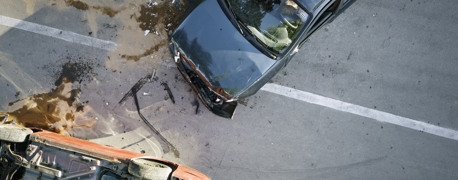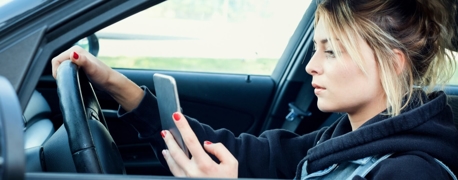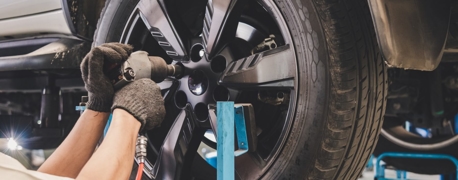Drivers, Don’t Rely Solely on Your Backup Cameras

About 13,000 injuries and 230 deaths occur each year because of backover accidents. Tragically, children are the victims nearly one-third of the time. Small children may run out behind a car without warning, and their smaller size can make them invisible to the driver of any vehicle, particularly a truck or SUV. About 50 children are backed over every week in the U.S. because a driver could not see them. 70% of the time, the driver was a parent or close relative.
Backover accidents are also a problem in the workplace, particularly at construction sites, warehouses, plants, factories, and other worksites that utilize heavy machinery and noisy equipment. According to the Occupational Safety and Health Administration (OSHA), more than 70 workers died in backover accidents in 2011 alone. Workers may be at risk of being run over or crushed by vehicles operated by distracted or inexperienced drivers at job sites that lack proper safety measures.
Backover accidents are horrific. They are also preventable. It is up to every driver to take the necessary precautions to avoid accidentally backing over a child, pedestrian, cyclist, or worker.
What Are Backover Accidents?
The National Highway Traffic Safety Administration (NHTSA) defines backover accidents as crashes involving a driver reversing their vehicle into a non-occupant such as a cyclist or pedestrian. Backovers are such a serious problem in the U.S. that, in 2014, years after Congress had passed a 2008 law requiring regulators to implement technology that would improve rearview visibility, the Department of Transportation (DOT) passed a rearview camera requirement for all passenger vehicles. Auto manufacturers were given until 2018 to put backup cameras in all new cars, light trucks, and SUVs.
Backup Cameras: Reducing Backover Injuries & Deaths
Today, all new motor vehicles under 10,000 pounds are required to have backup cameras, which allow a driver to see directly behind their vehicle. The objective of rearview camera technology is to eliminate the blind spot behind a vehicle, which has been called the “killing zone” by some. Most backup cameras have fisheye or wide-angle lenses to allow for maximum visibility.
Backup cameras have the potential to eliminate backover accidents entirely, but they must be used properly and by attentive drivers. Rearview cameras can give some drivers a false sense of security while reversing, and a distracted driver may still cause a backover accident even with a working rearview camera.
There are four potential problems with backup cameras:
- They can give a driver a false sense of security. Rearview cameras typically have an 80-degree visual field. Drivers cannot exclusively rely on backup cameras to show obstacles or persons behind their vehicles. They should check their vehicles before getting in the driver’s seat and should utilize rearview and side mirrors to check for pedestrians, pets, and bicyclists.
- They may not function properly. A driver who relies solely on backup cameras and vehicle alerts may unwittingly strike someone if the system is not working right. What if the camera is blurry, alerts are accidentally turned off, or the system stops working entirely? A driver who is used to hearing a beep or seeing a visual cue may cause a serious backover accident that injures someone or claims a life.
- A distracted driver may not use a camera in the first place. A rearview camera is of little use if a driver does not pay attention to it. It’s a simple and saddening thought. Drivers must carefully check their in-vehicle displays to make sure they notice any obstacle. Maintaining focus is the single most effective way to prevent accidents, backovers and otherwise.
- They do not prevent rollover accidents at the front of the vehicle. While today’s vehicles are required to have rearview cameras, most do not offer front-view protection. Drivers of larger vehicles like SUVs and trucks can cause front-over collisions if a small child or pet is in front of their vehicle, unseen because they are so low to the ground.
To combat these issues, auto manufacturers have implemented myriad features meant to prevent backover and other collisions. Vibrating drivers’ seats and steering wheels, audio alerts, and even preventative braking may be used to try to stop a driver from colliding with a person or object. Despite all of this, however, drivers need to do their part to prevent backovers.
What You Can Do as a Driver
As the world reopens and kids go back to school, there are more pedestrians and cyclists on sidewalks, crosswalks, parking lots, and driveways. Every driver, from a stay-at-home parent to a garbage truck operator, has an obligation to use extreme caution when backing up. In addition to utilizing backup cameras, this means paying attention at all times, being aware of the environment and any approaching pedestrians, and taking it slowly.
As a driver, you can prevent backover accidents by:
- Regularly testing and checking rearview cameras
- Using rearview and side mirrors as well as cameras
- Never relying solely upon your backup camera
- Being aware of your environment
- Never driving while distracted
- Never assuming pedestrians, children, or cyclists can see your vehicle
- Taking extra caution while reversing
Work-related backovers can be prevented by:
- Using spotters to help drivers reverse large vehicles
- Using video cameras with in-vehicle displays
- Using proximity detection devices to alert drivers of obstacles
- Training employees on where vehicle blind spots are and how to avoid them
- Avoiding distractions when reversing
Helping Those Harmed in Backover Accidents
Even the slowest backover accident can cause life-threatening injuries, particularly to children and the elderly. A human being stands no chance against a vehicle weighing thousands of pounds. When these tragedies occur, Arnold & Itkin stands ready to help victims and their families find answers. Our trial lawyers are known nationwide for protecting the rights of workers, consumers, and families across the United States who have had their lives turned upside down by carelessness and wrongdoing.
If you would like to find out how we can help you after a backover accident, call (888) 493-1629. Your initial consultation with a motor vehicle accident attorney is free and confidential.
- Categories


